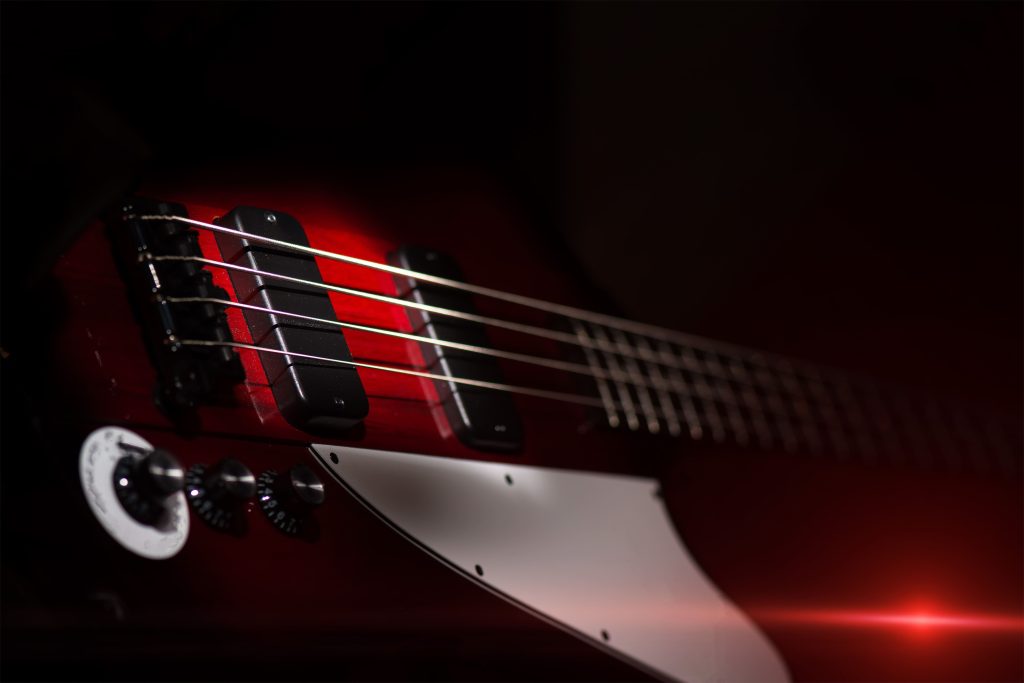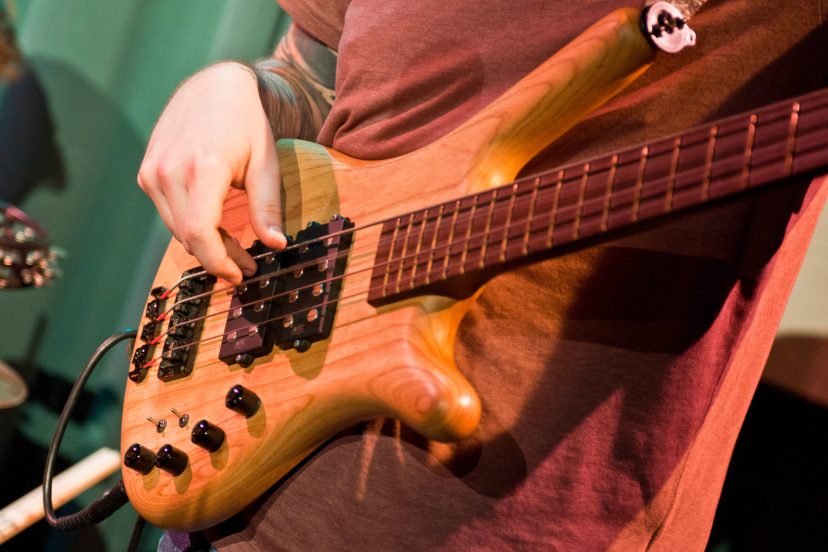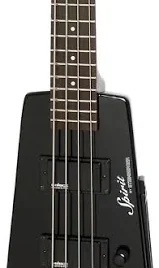Best Bass Guitars for Metal
Metal music demands a powerful, precise, and versatile bass sound to create its thunderous foundation. Choosing the right bass guitar is crucial for crafting that signature low-end fury.
In this comprehensive guide, we’ll explore the best bass guitars for metal, examining the features that make them stand out and helping you find the perfect instrument to unleash your sonic assault.
Understanding the Metal Bass Sound
To truly appreciate what makes a bass guitar ideal for metal, we need to dive into the specific characteristics that define the genre’s low-end requirements:
High-Output Pickups
Active pickups are often the go-to choice for metal bassists. They provide an aggressive tone and the ability to cut through dense mixes with clarity.
The clearer, more defined sound doesn’t get lost among distorted guitars and pummeling drums, ensuring that every note is heard and felt.
Extended Range
While traditional four-string basses still have their place in metal, many bassists opt for five or even six-string instruments. These extended-range basses offer extra low-end possibilities, allowing for earth-shaking notes that can shake venues to their foundations. They also provide more melodic options in the higher register, perfect for solos or harmonizing with guitars.
Solid Construction
Neck-through designs are popular in metal basses for good reason. They offer superior sustain and stability, which is especially crucial when dealing with low tunings and high-gain scenarios. The seamless transition from body to neck ensures that every note rings out with clarity and power.
Versatile Electronics
Onboard EQ controls are essential for quick tone shaping on the fly. Metal is a diverse genre with many subgenres, each requiring slightly different tonal characteristics.
The ability to adjust your sound quickly between songs or even within a single track can make a huge difference in your overall performance.
Comfortable Playability
Fast necks and good upper fret access are crucial for technical playing, a hallmark of many metal styles. Whether you’re laying down a groove or tearing through a complex solo, your bass should feel like an extension of your body, allowing you to focus on your performance as opposed to fighting against your instrument.
Now that we’ve established the key features, let’s explore some of the top contenders in the metal bass arena.
Top Bass Guitars for Metal
1. Ibanez BTB746 6-String
Ibanez has long been a favorite among metal musicians, and the BTB746 is a prime example of why. This six-string beast is designed to handle the most extreme metal styles with ease.
Key Features:
- Neck-through design for most sustain
- Active Bartolini BH2 pickups for aggressive, clear tone
- Three-band EQ for precise tone shaping
- 35-inch scale length for excellent string tension in low tunings
- Wenge/bubinga neck for fast playability
The BTB746’s extended range allows for crushing low-end rumble while also providing the ability to venture into lead territory. Its active electronics confirm that every note cuts through the mix, whether you’re laying down a groove or unleashing a blistering solo.
The neck-through design enhances sustain and provides excellent stability, which is crucial when dealing with the extreme string tension often used in metal. The 35-inch scale length further contributes to this stability, allowing for better intonation and a tighter low end, especially when tuning down.
The combination of wenge and bubinga in the neck creates a fast, smooth playing surface that’s perfect for technical passages. The three-band EQ allows for on-the-fly tone adjustments, giving you the flexibility to adapt to different musical contexts or compensate for challenging live sound environments.
Check out the Ibanez BTB746 6-String on Amazon
2. Schecter Stilletto Extreme-5
Schecter’s reputation in the metal world is well-deserved, and the Stilletto Extreme-5 lives up to the hype. This five-string bass combines sleek aesthetics with powerful performance.
Key Features:
- EMG 40DC pickups for punchy, articulate tone
- Active electronics for enhanced tonal control
- Thin-C profile neck for comfortable, fast playing
- Through-body stringing for increased sustain
- Maple neck with rosewood fretboard for bright attack
The Stilletto Extreme-5 delivers crushing lows and crisp highs, making it perfect for genres ranging from thrash to progressive metal. Its comfortable neck ensures that you can play for hours without fatigue, essential for long practice sessions or marathon gigs.
The EMG 40DC pickups are a standout feature, providing a punchy, articulate tone that cuts through even the densest mix. These active pickups, combined with the bass’s onboard preamp, offer a wide range of tonal possibilities.
You can go from a tight, aggressive sound perfect for fast, technical playing to a rounder, more melodic tone for slower, more atmospheric passages.
The through-body stringing enhances sustain and provides a more direct transfer of string vibration to the body, resulting in a fuller, more resonant tone. The maple neck and rosewood fretboard combination offers a bright attack that helps your notes stand out, while still providing the warmth and depth needed for a full-bodied bass sound.
Check out the Schecter Stilletto Extreme-5 on Amazon
3. ESP LTD B-1005 Multi-Scale
For those seeking the cutting edge of bass technology, the ESP LTD B-1005 Multi-Scale is a game-changer. Its innovative design addresses many of the challenges faced by metal bassists.
Key Features:
- Fanned frets for optimal string tension across all five strings
- Nordstrand Big Split pickups for versatile tonal options
- 35″ to 34″ multi-scale design for improved intonation
- Ash body with maple top for balanced tone
- 3-piece maple neck with rosewood fingerboard
The B-1005’s multi-scale design provides improved intonation and playability, especially when dealing with extreme low tunings. Its Nordstrand pickups offer a wide tonal palette suitable for various metal subgenres, from sludge to technical death metal.
The fanned fret design is particularly useful for metal bassists. It allows for optimal string tension across all strings, providing a tighter, more focused low end without sacrificing playability on the higher strings.
This design also contributes to better intonation across the entire fretboard, which is crucial when playing complex chords or intricate lead lines.
The combination of an ash body and maple top results in a well-balanced tone with plenty of midrange punch and high-end clarity. The 3-piece maple neck offers excellent stability, crucial for maintaining tuning and intonation during intense performances.
See the ESP LTD B-1005 Multi-Scale on Amazon
4. Warwick Corvette $$ 5-String
Warwick basses are known for their distinctive growl, and the Corvette $$ 5-String is no exception. This German-engineered instrument is built to deliver the punch and clarity needed in modern metal.
Key Features:
- Active MEC J/J pickups for aggressive, punchy tone
- Wenge fingerboard for bright, articulate notes
- Brass nut for enhanced sustain and clarity
- Two-piece maple neck for stability
- 3-band active EQ for precise tone shaping
The Corvette $$’s unique tonal character sits perfectly in a metal mix, providing the aggression needed to drive the rhythm section while maintaining clarity for more intricate passages. Its build quality ensures that it can withstand the rigors of touring and intense performances.
The MEC J/J pickups are a standout feature, offering an aggressive, punchy tone that’s perfect for metal. The combination of a jazz-style bridge pickup and a precision-style neck pickup provides a wide range of tonal options. You can blend the two for a full, rounded sound or favor one for more focused tones.
The wenge fingerboard contributes to the bass’s bright, articulate character, helping each note cut through even in dense, distorted mixes. The brass nut is an interesting touch, enhancing sustain and adding a bit of extra clarity to open strings.
The 3-band active EQ is particularly useful for metal, allowing you to sculpt your tone to fit perfectly in any mix. You can boost the lows for thunderous power, cut the mids for a more scooped sound, or boost the highs for extra bite and definition.
5. Dingwall NG-2 5-String
Dingwall has gained a massive following in the metal community, thanks in part to its association with renowned metal bassists like Nolly Getgood. The NG-2 represents the pinnacle of modern bass design for metal.
Key Features:
- Multi-scale design (37″ to 34″) for optimal tension and tone
- Custom FD3-N pickups for clear, powerful sound
- Three-band EQ for versatile tone shaping
- Swamp ash body with maple neck for balanced tone
- Banjo frets for reduced fret wear and smoother playing
The NG-2’s extended scale length on the low B string provides unparalleled clarity and punch in even the lowest tunings. Its custom pickups and electronics allow for a wide range of tones, from djent-style clarity to thunderous doom metal rumble.
The multi-scale design is particularly useful for metal. The 37″ scale on the low B string provides exceptional tension and clarity, allowing for articulate playing even in extremely low tunings. This design also contributes to improved ergonomics, reducing hand strain during long playing sessions.
The custom FD3-N pickups are specifically designed for metal, offering a clear, powerful sound that maintains definition even under high gain. The three-band EQ allows for precise tone shaping, giving you the ability to dial in the perfect sound for any subgenre of metal.
The combination of a swamp ash body and maple neck results in a well-balanced tone with plenty of attack and sustain. The banjo frets are an interesting feature, reducing fret wear and providing a smoother playing experience, which can be particularly useful during fast, technical passages.

Honorable Mentions
While the above basses are top-tier choices, several other models are worth considering:
Spector Euro 5 LX
Known for its rich, full-bodied tone and excellent craftsmanship, the Spector Euro 5 LX is a favorite among many metal bassists. Its neck-through construction provides excellent sustain, while its EMG pickups deliver a powerful, clear tone that cuts through any mix.
Music Man Stingray Special 5HH
A classic design with modern updates, the Stingray Special 5HH is perfect for metal and beyond. Its dual humbucking pickups provide a thick, aggressive tone, while its 18-volt preamp offers plenty of headroom for clear, punchy sound even at high volumes.
Jackson X Series Spectra Bass SBXQ V
Offering great value with its active pickups and sleek design, the Jackson Spectra Bass SBXQ V is an excellent choice for metal bassists on a budget. Its 35″ scale length provides excellent tension for low tunings, while its active electronics allow for a wide range of tonal options.
Choosing the Right Bass for Your Metal Style
When selecting a bass for metal, it’s crucial to consider the specific subgenre you’ll be playing most often. Different styles of metal can benefit from different bass characteristics:
Death Metal and Technical Death Metal
These genres often benefit from extended range basses with active electronics for clarity in fast passages. The ESP LTD B-1005 or Dingwall NG-2 would be excellent choices.
The extended range allows for lower tunings, while the active electronics provide the clarity needed for complex, fast-paced riffs.
Doom and Sludge Metal
These slower, heavier styles might lean more towards four-string basses with passive pickups for a warmer, more vintage tone. A Fender Precision Bass with upgraded pickups could work well here.
The simplicity of a P-Bass allows the fundamental notes to really shine through, perfect for the slow, crushing riffs characteristic of these genres.
Progressive Metal
The genre’s complexity often calls for versatile basses with extended range. The Ibanez BTB746 or Warwick Corvette $$ would be strong contenders.
The extra strings provide more melodic options, while the active electronics allow for a wide range of tones to suit the genre’s diverse sound palette.
Thrash Metal
Fast-paced and aggressive, thrash benefits from basses with quick response and punchy mids. The Schecter Stilletto Extreme-5 or Music Man Stingray would excel in this context.
Their powerful pickups and onboard preamps allow for the aggressive, mid-forward tone that cuts through the mix in thrash metal.
Don’t forget to factor in your playing style as well. If you’re a finger-style player, you might prefer a bass with a bit more mid-range punch to help your notes stand out. Pick players often gravitate towards basses with a bit more top-end bite to cut through the mix.
Setting Up Your Metal Bass
Once you’ve chosen your weapon of choice, proper setup is crucial for achieving the ultimate metal bass tone. Here are some tips:
String Gauge
Experiment with heavier gauge strings for better tension, especially if you’re tuning down. Many metal bassists prefer .110 or even .115 gauge for their low B string. Heavier strings provide more tension, which can help maintain clarity and punch in lower tunings.
However, be aware that very heavy strings can be harder on your fingers and may need adjustments to your bass’s truss rod and bridge.
Action
Set your action low enough for speed but high enough to avoid fret buzz, especially on the lower strings. This balance is crucial for maintaining clarity in fast, technical passages. Start with a medium-low action and adjust from there based on your playing style and the amount of fret buzz you’re experiencing.
EQ
Start with a slight mid-scoop and boosted lows and highs as a baseline metal tone, then adjust to taste. Don’t be afraid to experiment with different EQ settings for various parts of a song. For example, you might want a scooped sound for verses and a more mid-forward tone for choruses or solos.
Compression
A good compressor pedal can help even out your playing and add sustain. This is especially useful for genres that need both thunderous lows and articulate high-end detail. Start with a moderate compression ratio (around 4:1) and adjust from there. Be careful not to over-compress, as this can rob your playing of dynamics.
Distortion
While not always necessary, a subtle bass overdrive can help your instrument cut through a dense mix. Be cautious not to overdo it, as too much distortion can muddy your tone. Consider using parallel processing, blending a clean signal with a distorted one to maintain clarity while adding grit.
Recording and Mixing Metal Bass
Capturing the perfect metal bass tone in the studio needs attention to detail:
DI Box
Always record a clean DI signal alongside your amped tone. This gives you flexibility in mixing and allows for re-amping if needed. A high-quality DI box can make a significant difference in the clarity and fullness of your direct signal.
Amp Selection
Choose an amp that complements your bass. Ampeg SVTs are a popular choice for their clear, powerful tone. Other options include the Darkglass Microtubes, known for their modern, aggressive sound, or the Mesa Boogie Bass Prodigy, which offers a wide range of tones suitable for metal.
Microphone Placement
Experiment with mic placement on the cabinet. A combination of a dynamic mic (like a Shure SM7B) close to the speaker and a condenser mic (like an AKG C414) for room tone can yield great results. Try placing the dynamic mic slightly off-center of the speaker cone for a balance of low-end thump and high-end definition.
EQ in the Mix
Be mindful of frequency conflicts with the guitars. A slight cut around 2-3 kHz on the bass can help it sit better in the mix without losing definition.
Boosting around 100-200 Hz can add punch, while a slight boost around 800 Hz can help the bass cut through the mix.
Parallel Processing
Consider using parallel compression or distortion to blend a clean, punchy bass tone with a more aggressive, distorted sound. This technique allows you to maintain the clarity and definition of the clean signal while adding the grit and aggression of distortion.
Maintenance for Peak Performance
To keep your metal bass in top shape:
Regular Setup
Have your bass set up professionally at least once a year, or more if you often change tunings or string gauges. This ensures optimal playability and prevents issues like fret buzz or intonation problems.
Clean Your Instrument
Wipe down your strings and fretboard after each playing session to prevent buildup and extend string life. Use a soft, lint-free cloth for the body and a slightly damp cloth for the fretboard. Consider using specialized cleaning products designed for musical instruments.
Battery Management
If your bass has active electronics, always unplug it when not in use to preserve battery life. Consider keeping a spare battery in your gig bag. Some bassists prefer to use rechargeable batteries for both cost-effectiveness and environmental reasons.
Climate Control
Extreme temperature changes can affect your bass’s neck and electronics. Store your instrument in a stable environment when possible. If you’re traveling with your bass, allow it to acclimate to room temperature before playing to prevent tuning instability.
The Evolution of Bass in Metal
The role of bass in metal has evolved significantly since the genre’s inception. Early metal often relegated the bass to a background role, but modern productions have brought it to the forefront.
Bands like Tool, Mudvayne, and Periphery have showcased how integral a prominent, well-crafted bass tone is to the overall metal sound.
This evolution has driven innovation in bass design, with extended range instruments and advanced electronics becoming more common. It’s an exciting time for metal bassists, with more options than ever to craft their perfect tone.
Modern metal bass playing often incorporates techniques like slapping, tapping, and harmonics, which were once more associated with funk or jazz. This expanded vocabulary has allowed bassists to take on a more prominent role in metal compositions, often contributing melodic lines or complex rhythmic patterns that go beyond traditional root note playing.
The increased focus on bass in metal has also led to advancements in amplification and effects technology. High-powered, clear-sounding bass amps capable of handling extended range instruments have become more common.
Effects pedals designed specifically for bass, including distortions and overdrives that preserve low-end while adding grit, have proliferated.
People Also Asked
What is the best bass guitar for death metal?
The ESP LTD B-1005 Multi-Scale or the Dingwall NG-2 5-String are excellent choices for death metal because of their extended range and active electronics, which provide the clarity needed for fast, complex riffs.
Are 5-string basses necessary for metal?
While not absolutely necessary, 5-string basses are very popular in metal as they allow for lower tunings and extended range. However, many metal bassists still use 4-string basses effectively.
What pickups are best for metal bass?
Active pickups like EMGs or Bartolinis are often preferred for metal because of their high output and clarity. However, some bassists prefer passive pickups for a warmer, more vintage tone.
How do I get a good metal bass tone?
A good metal bass tone typically involves a slight mid-scoop with boosted lows and highs. Using active pickups, a compressor, and sometimes a subtle overdrive can help achieve a punchy, aggressive tone that cuts through the mix.
What string gauge should I use for metal bass?
Many metal bassists prefer heavier gauge strings, often using .110 or even .115 for the low B string. This provides better tension and clarity, especially when tuning down.
Is a Jazz or Precision bass better for metal?
Both can work well for metal, but many prefer Jazz basses for their more aggressive, midrange-focused tone. However, some subgenres like doom or sludge metal often favor the thicker, rounder tone of a Precision bass.
What’s the difference between active and passive basses for metal?
Active basses have onboard preamps that boost the signal and often provide more EQ options, resulting in a clearer, more aggressive tone. Passive basses have a warmer, more organic sound that some prefer for certain metal subgenres.
How important is scale length for metal bass?
Scale length can be quite important, especially for lower tunings. Longer scale lengths (like 35″ or even 37″ for the low B) provide better tension and clarity for very low notes.
What effects do metal bassists commonly use?
Common effects include compression, overdrive or distortion, and sometimes chorus or flanger for more atmospheric parts. Some bassists also use octave pedals to fatten up their tone.
How do I EQ my bass for metal?
Start with a slight mid-scoop (around 400-800 Hz) and boost the lows (around 100 Hz) and highs (around 2-3 kHz). Adjust to taste based on your specific bass and the overall mix.
Key Takeaways
- Look for basses with high-output pickups, solid construction, and versatile electronics.
- Consider extended range basses for more tonal possibilities.
- Brands like Ibanez, Schecter, ESP, Warwick, and Dingwall offer excellent options for metal bassists.
- Match your bass choice to your specific subgenre and playing style.
- Proper setup and EQ are crucial for achieving the perfect metal bass tone.




